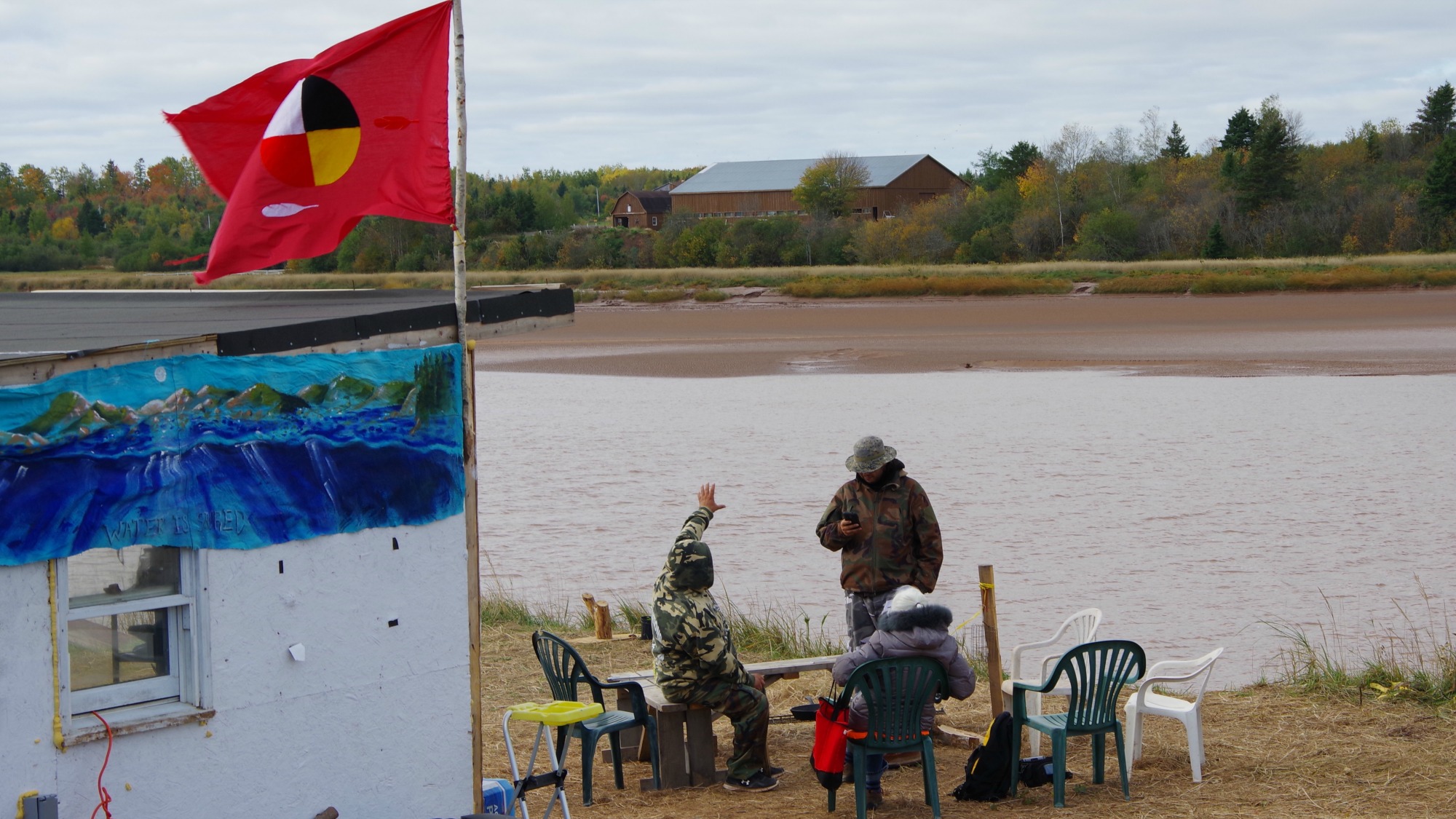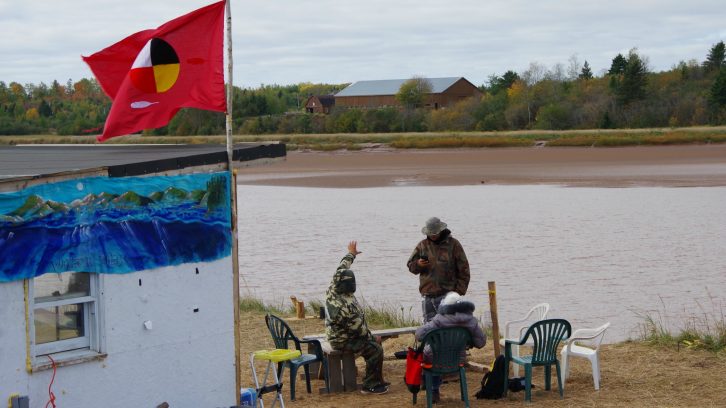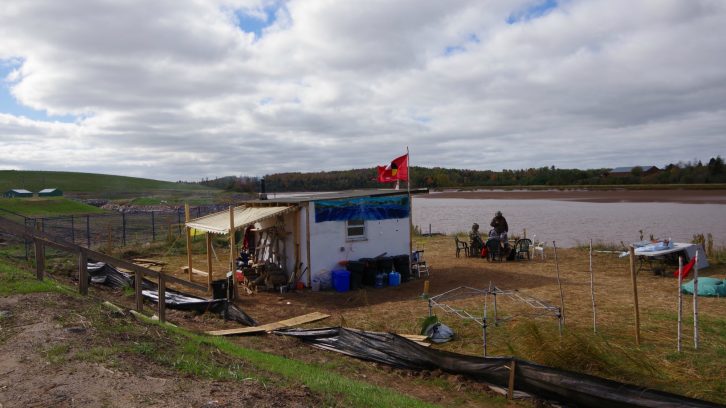Alton Gas Protest
Using treaty rights to protect a river
Protesters have time to 'celebrate' after Alton Gas delays brining until 2017

caption
District warchief from Elsipogtog, Jason Augustine, joins Dale Andrew Poulette and elder Isabelle Knockwood at the fire
caption
District warchief from Elsipogtog, Jason Augustine, joins Dale Andrew Poulette and elder Isabelle Knockwood at the fire.It’s been many years since a truckhouse last stood on the muddy shores of the Shubenacadie River.
It’s a cool fall morning and smoke rises from an outdoor fire. A scattering of lawn chairs overlook the river while flags blow in the breeze. The small, colourfully painted building is well stocked with firewood and food and a recently donated wood stove keeps it comfortably warm.
“Protecting our Sacred Water” reads a sign on the side of the truckhouse. Related stories
Once a common sight in the area, truckhouses were places for Mi’kmaq and settlers to meet and exchange goods. The right to have these buildings was included in the 1752 Peace and Friendship Treaties.
This truckhouse, built earlier this fall, is a modern version of the trade posts of the past.
But it’s adapted to modern needs: it has a role to play in a fight to stop a natural gas storage project.

caption
This Mi’kmaq truckhouse was built recently near the Shubenacadie River.Cheryl Maloney, from the Sipeknekatik First Nation, says building the truckhouse was a strategic choice in the fight to stop the Alton Gas project.
“We wanted people to come to the river and see how beautiful our river is.”
Alton Gas, a subsidiary of AltaGas, intends to store natural gas in underground salt caverns near the Shubenacadie River.
According to the company website, river water, cycled through the caverns, will dissolve the salt, leaving space for gas. The company plans to gradually discharge the resulting brine into the river in 2017.
Concerns over the project are numerous. Mi’kmaq and allies are questioning the approval process at the local and provincial levels as well as the science conducted by the company.
Resistance to the project is fierce.
Amidst all this, Maloney, a Dalhousie Law graduate and president of the Native Women’s Association, came up with the idea to build a truckhouse next to the Alton Gas construction site.
It was a tactic that would allow constant monitoring of the site and treaty-protected access to the river.
“We wanted to make sure people felt safe and legally entitled to be there”, she says.
It was logical to use the power of the historical treaties.
“You all have that treaty right to come to the truckhouse to trade. It’s protected in the Constitution and it’s your treaty right,” she says.
Across the fence marking off the construction site, things are quiet.
The only signs of life are the security guards huddled in a small building on higher ground, within sight of the truckhouse.
Phone calls and emails to the company for the purpose of this article were not answered, but the Alton Gas recently announced it would delay brining till 2017.
The activists feel they’ve been granted a reprieve.
“We need to be prepared, but we can rest and celebrate a little,” Cheryl Maloney wrote in a Facebook post on October 23.
The message the activists are sending is clear. The truckhouse is there to stay and they want Alton Gas to go.
Dale Andrew Poulette practically lives at the truckhouse. He sees people come and go, and there are so many faces, he says, he loses track.
From the beginning, support for the truckhouse was strong.
“They’ll do anything to help, whether it’s dropping off solar panels . . . or building that truckhouse with a group of people,” he says.
Support came from everywhere, including from many non-indigenous Nova Scotians.
This issue is so big, says Maloney.
“It’s not a Mi’kmaq issue.”
From local residents and fishermen, to environmental activists, the truckhouse keeps drawing people in.
Sadie Beaton, who works at the Ecology Action Centre in Halifax, has visited several times.
“We are all treaty people, we’re all treaty beneficiaries. We have a responsibility to learn what that means and look at what needs to be done to uphold our end of the bargain,” she says.
While truckhouses of the past were about the trade of physical goods, today it’s more of a sharing of information, knowledge, ideas and stories.

